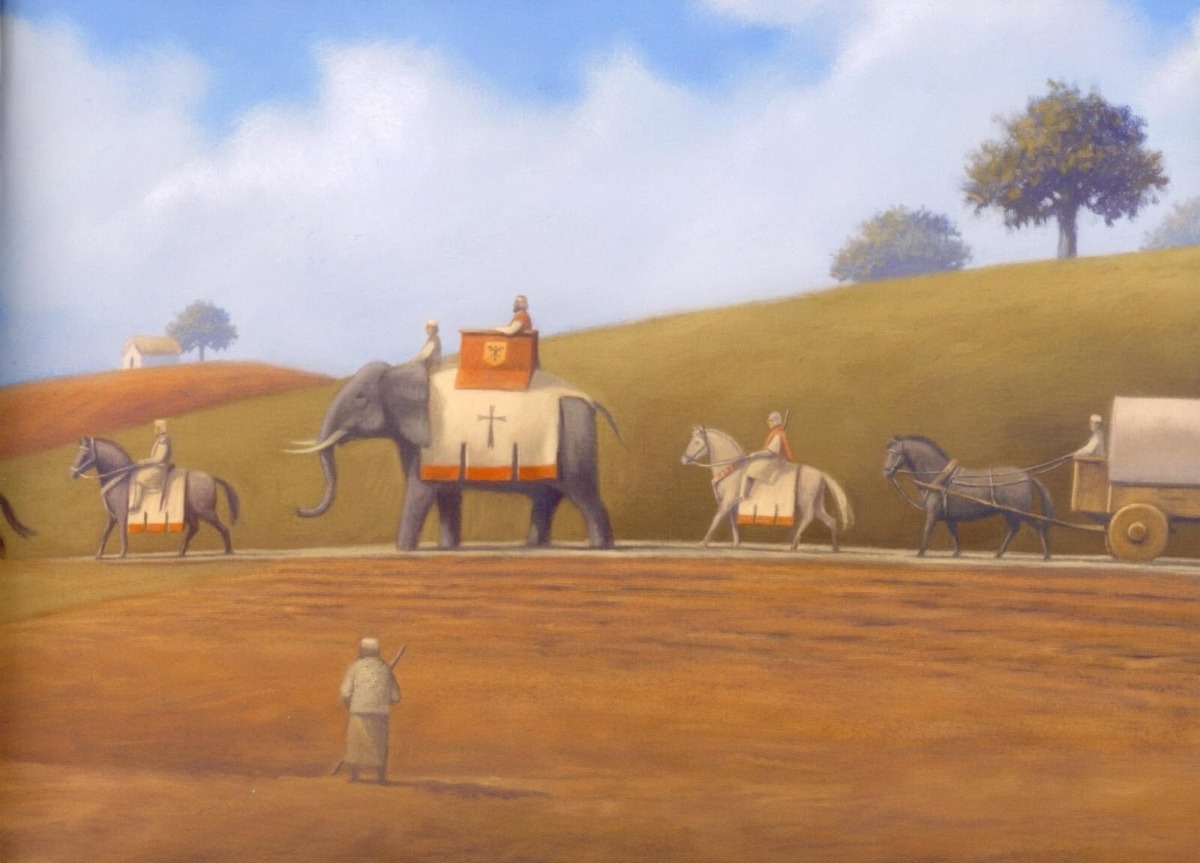It was early October of the year 801 when a couple of ships carrying the emblem of Harun al Rashid (Caliph of Baghdad) docked in the small harbor of Portovenere. The local villagers were astonished and frightened to see a majestic elephant disembark. It was Abul Abbas, a splendid and rare Asian elephant that, according to some sources, was an albino (or white) specimen. He had been traveling for five years, heading to the seat of Charlemagne’s court in Aachen. But why?
The story of Abul Abbas is shrouded in history and legend, but the few historical sources that mention him take us to 797 when Charlemagne sent a delegation to Baghdad. The objective was to establish relations with the Abbasid Caliphate to face the Muslim pirates who tormented the Mediterranean Sea and to contain the Umayyad presence in Europe. The group was led by a North African Jew named Isaac, who spoke Arabic.

The Caliph appreciated the visit of this delegation and its linguistic and cultural intermediary. He decided to send gifts to Charlemagne, among which were emblematic objects of Arab technology, such as a water hourglass. But Abul Abbas was undoubtedly the most unique gift. According to some sources, Charlemagne himself had explicitly asked for an elephant as a gift.
Abul Abbas became a political symbol witness to the close diplomatic relations between the Carolingian Empire and the Abbasid Caliphate. Not all historians are convinced that the elephant was albino, but this rare and bizarre characteristic would have given him even more magnificence if it were true.

The elephant’s journey lasted five years. Abul Abbas traveled by land from Baghdad to Jerusalem and Carthage, and by sea from Marseille to Portovenere. After disembarking in the Gulf of Poets, he was taken to another Italian town, Vercelli, where he spent the winter. Once the snow had melted, he crossed the Alps and reached the imperial city of Aachen in July 802.
Finally, Charlemagne was able to admire his most precious gift, showing it to his guests on several occasions. The elephant made such an impression that his death was noted as that of a princess or a bishop in the Annales Regni Francorum (Royal Frankish Annals). Abul Abbas died in 810 after crossing the Rhine while Charlemagne conducted his last military campaign. It is likely that he never adapted to the Nordic climate and that he died of pneumonia.

“The story of Charlemagne’s elephant may appear to be the story of an oddity, the somewhat sad adventure of a poor animal who ended up dying in the cold Germanic climate. But in reality, the whole story – if carefully examined – reveals a lot about the diplomatic relationships of the time, of “gift politics”, of the political meaning that the possession of an elephant could have as an attribute of royalty, and also of the image that Christian Europe had of the world at the time.”
Giuseppe Albertoni in the book “L’elefante Di Carlo Magno”
We thank Gino Ragnetti for his contribution to the article.
The cover image is an 11th-century Romanesque image of a white elephant preserved in the Prado Museum in Madrid.